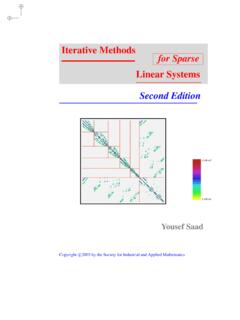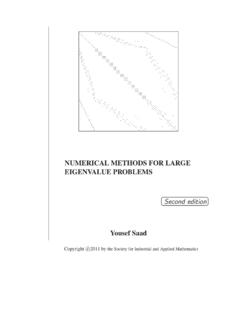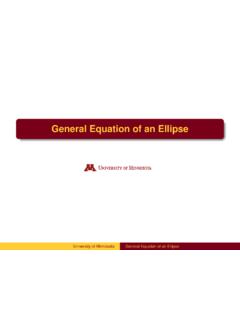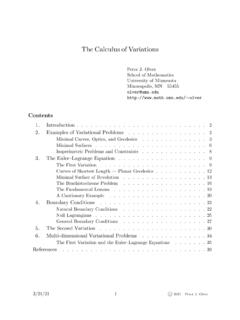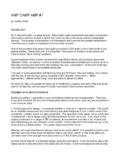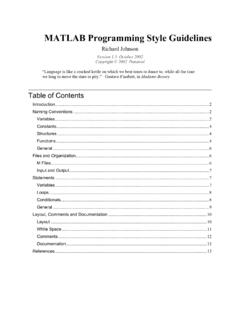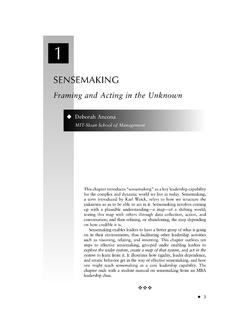Transcription of CSCI 2021: Assembly Basics and x86-64 - University of …
1 CSCI 2021: Assembly Basics and x86-64 . Chris Kauffman Last Updated: Fri Feb 25 01:05:20 PM CST 2022. 1. Logistics Reading Bryant/O'Hallaron Lab / HW. Now Ch : Assembly , Lab05/HW05: Bit ops Arithmetic, Control Lab06: GDB Basics Later Ch : Arrays, HW06: Assembly Basics Structs, Floats Any overview guide to Project 2: Due Mon 2/28. x86-64 Assembly instructions Problem 1: Bit shift such as Brown University 's operations (50%). x64 Cheat Sheet Problem 2: Puzzlebox via Goals debugger (50% + makeup). Assembly Basics NOTE: Line Count Limits + Bit x86-64 Overview Shift Ops 2. GDB: The GNU Debugger Overview for C and Assembly Programs here: ~kauffman/2021/gdb Most programming environments feature a Debugger Java, Python, OCaml, etc.
2 GDB works well C and Assembly programs Features in P2 (C programs) and P3 ( Assembly Programs). P2 Demo has some Basics for C programs including TUI Mode Breakpoint / Continue Next / Step 3. The Many Assembly Languages Most microprocessors are created to understand a binary machine language Machine Language provides means to manipulate internal memory, perform arithmetic, etc. The Machine Language of one processor is not understood by other processors MOS Technology 6502 IBM Cell Microprocessor 8-bit operations, limited Developed in early 2000s, addressable memory, 1 many cores (execution general purpose register, elements), many registers powered notable gaming (32 on the PPE), large systems in the 1980s addressable space, fast Apple IIe, Atari 2600, multimedia performance, is Commodore a pain to program Nintendo Entertainment Playstation 3 and Blue Gene system / Famicom Supercomputer 4.
3 Assemblers and Compilers Compiler: chain of tools that translate high level languages to lower ones, may perform optimizations Assembler: translates text description of the machine code to binary, formats for execution by processor, late compiler stage Consequence: The compiler can generate Assembly code Generated Assembly is a pain to read but is often quite fast Consequence: A compiler on an Intel chip can generate Assembly code for a different processor, cross compiling 5. Our focus: The x86-64 Assembly Language x86-64 Targets Intel/AMD chips with 64-bit word size Reminder: 64-bit word size size of pointers/addresses Descended from IA32: Intel Architecture 32-bit systems IA32 descended from earlier 16-bit systems like Intel 8086.
4 There is a LOT of cruft in x86-64 for backwards compatibility Can run compiled code from the 70's / 80's on modern processors without much trouble x86-64 is not the Assembly language you would design from scratch today Will touch on evolution of Intel Assembly as we move forward Warning: Lots of information available on the web for Intel Assembly programming BUT some of it is dated, IA32 info which may not work on 64-bit systems 6. x86-64 Assembly Language Syntax(es). Different assemblers understand different syntaxes for the same Assembly language GCC use the GNU Assembler (GAS, command 'as '). GAS and Textbook favor AT&T syntax so we will too NASM assembler favors Intel, may see this online AT&T Syntax (Our Focus) Intel Syntax multstore: multstore: pushq %rbx push rbx movq %rdx, %rbx mov rbx, rdx call mult2@PLT call movq %rax, (%rbx) mov QWORD PTR [rbx], rax popq %rbx pop rbx ret ret Use of % to indicate registers Register names are bare Use of q/l/w/b to indicate Use of QWORD etc.
5 To indicate 64 / 32 / 16 / 8-bit operands operand size 7. Generating Assembly from C Code gcc -S will stop compilation at Assembly generation Leaves Assembly code in and conventionally Assembly code though sometimes is used By default, compiler performs lots of optimizations to code gcc -Og : disable optimizations to make it easier to debug, generated Assembly is slightly more readable Assembly 8. Example of Generating Assembly from C. >> cat # show C file to be translated // : sample C function // to compile to Assembly long exchange(long *xp, long y){ # function to translate long x = *xp; # involves pointer deref *xp = y;. return x;. }. >> gcc -Og -S # Compile to show Assembly # -Og: debugging level optimization # -S: only output Assembly >> cat # show Assembly output.
6 File " "..text .globl exchange .type exchange, @function exchange: # beginning of exchange function .LFB0: .cfi_startproc movq (%rdi), %rax # pointer derefs in Assembly movq %rsi, (%rdi) # uses registers ret .cfi_endproc .LFE0: .size exchange, .-exchange .ident "GCC: (GNU) "..section . ,"",@progbits 9. gcc -Og -S > cat # show a C file long mult2(long a, long b);. void multstore(long x, long y, long *dest){. long t = mult2(x, y);. *dest = t;. }. > gcc -Og -S # Compile to show Assembly # -Og: debugging level optimization # -S: only output Assembly > cat # show Assembly output .file " "..text .globl multstore # function symbol for linking .type multstore, @function multstore: # beginning of mulstore function.
7 LFB0: .cfi_startproc # assembler directives pushq %rbx # Assembly instruction .cfi_def_cfa_offset 16 # directives .cfi_offset 3, -16. movq %rdx, %rbx # Assembly instructions call mult2@PLT # function call movq %rax, (%rbx). popq %rbx .cfi_def_cfa_offset 8. ret # function return .cfi_endproc 10. Every Programming Language Look for the following as it should almost always be there Comments Statements/Expressions Variable Types Assignment Basic Input/Output Function Declarations Conditionals (if-else). Iteration (loops). Aggregate data (arrays, structs, objects, etc). Library system 11. Exercise: Examine Take a simple sample problem to demonstrate Assembly : Computes Collatz Sequence starting at n=10: if n is ODD n=n*3+1; else n=n/2.
8 Return the number of steps to converge to 1 as the return code from main(). The following codes solve this problem Code Notes Hand-coded Assembly for obvious algorithm Straight-forward reading Unsigned C version Generated Assembly is reasonably readable Signed C vesion Generated Assembly is interesting Kauffman will Compile/Run code Students should study the code and predict what lines do Illustrate tricks associated with gdb and Assembly 12. Exercise: 1 ### Compute Collatz sequence starting at 10 in Assembly . 2 .section .text 3 .globl main 4 main: 5 movl $0, %r8d # int steps = 0;. 6 movl $10, %ecx # int n = 10;. 7 .LOOP: 8 cmpl $1, %ecx # while(n > 1){ // immediate must be first 9 jle.}
9 END # n <= 1 exit loop 10 movl $2, %esi # divisor in esi 11 movl %ecx,%eax # prep for division: must use edx:eax 12 cqto # extend sign from eax to edx 13 idivl %esi # divide edx:eax by esi 14 # eax has quotient, edx remainder 15 cmpl $1,%edx # if(n % 2 == 1) {. 16 jne .EVEN # not equal, go to even case 17 .ODD: 18 imull $3, %ecx # n = n * 3. 19 incl %ecx # n = n + 1 OR n++. 20 jmp .UPDATE # }. 21 .EVEN: # else{. 22 sarl $1,%ecx # n = n / 2; via right shift 23 .UPDATE: # }. 24 incl %r8d # steps++;. 25 jmp .LOOP # }. 26 .END: 27 movl %r8d, %eax # r8d is steps, move to eax for return value 28 ret 13. Answers: x86-64 Assembly Basics for AT&T Syntax Comments are one-liners starting with #.
10 Statements: each line does ONE thing, frequently text representation of an Assembly instruction movq %rdx, %rbx # move rdx register to rbx Assembler directives and labels are also possible: .global multstore # notify linker of location multstore multstore: # label beginning of multstore section blah blah blah # instructions in this this section Variables: mainly registers, also memory ref'd by registers maybe some named global locations Assignment: instructions like movX that put move bits into registers and memory Conditionals/Iteration: Assembly instructions that jump to code locations Functions: code locations that are labeled and global Aggregate data: none, use the stack/multiple registers Library system : link to other code 14.


